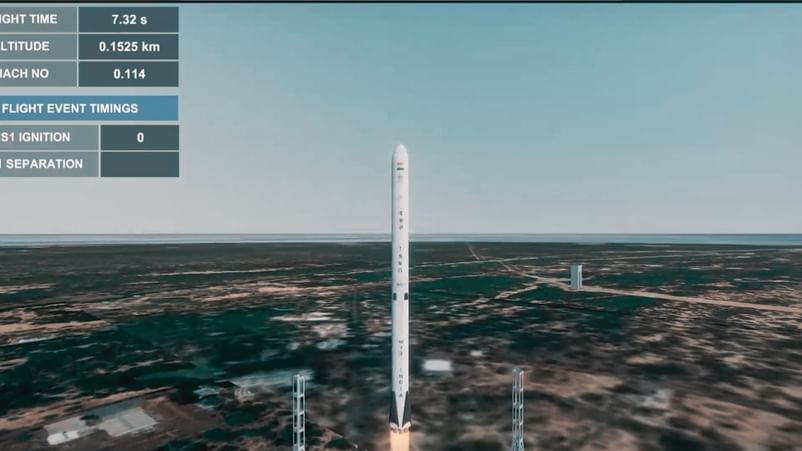Science
ISRO Advances Mega Rocket Development for Lunar Missions

The Indian Space Research Organisation (ISRO) has confirmed the development of two significant rocket projects, the Next Generation Launch Vehicle (NGLV) and the Large Moon Launch Vehicle (LMLV). This announcement was made by ISRO Chairman V Narayanan during the Emerging Science, Technology and Innovation Conclave (ESTIC 2025) held at ISRO headquarters in Bengaluru.
Narayanan highlighted the evolution of India’s launch capabilities, stating, “Our first launch vehicle had a capability of only 35 kg, which we successfully accomplished in 1980. Today, we are discussing something around 30,000 kg to Low Earth Orbit through the next generation launcher.” The NGLV design features a reusable first-stage booster, a move that received approval from the Union Cabinet last year.
The Chairman elaborated on the ambitious plans for the LMLV, which is intended to support India’s future crewed lunar missions. “The honorable Prime Minister has provided guidelines for building a launcher capable of lifting between 75,000 kg and 80,000 kg. We are still in the conceptual phase; the design has not yet been finalized,” he said. The LMLV is envisioned as a towering structure, approximately 100 meters tall, with a liftoff mass ranging from 2,600 to 3,000 tons and a diameter of 6.5 meters.
The rocket’s first stage will utilize a cluster of seven LOX-Methane engines, complemented by strap-on boosters. The second stage is set to feature two LOX-Methane engines, along with a cryogenic upper stage powered by two LOX-LH2 engines.
ISRO’s mission to the Moon will utilize the LMLV as the heaviest rocket in its fleet, designed to inject 31,000 kg into translunar orbit. The plan includes deploying two of these super heavy-lift rockets for the lunar mission, with one carrying the Earth Departing Stage (EDS) and the other transporting a stack comprising the Crew Module, Support Module, and Lunar Module.
Upon reaching lunar orbit, the Gaganyatris, or crew members, will transfer from the Crew Module to the lander, conduct surface exploration, and then return to the Crew Module, discarding the Lunar Module before heading back to Earth. ISRO aims to send a crewed orbiter and two uncrewed landers between 2036 and 2040, followed by a crewed lunar mission scheduled for 2040.
This development signifies a major leap for India’s space exploration efforts, marking a pivotal moment in the nation’s journey toward lunar exploration and beyond.
-

 World5 months ago
World5 months agoSBI Announces QIP Floor Price at ₹811.05 Per Share
-

 Lifestyle5 months ago
Lifestyle5 months agoCept Unveils ₹3.1 Crore Urban Mobility Plan for Sustainable Growth
-

 Science4 months ago
Science4 months agoNew Blood Group Discovered in South Indian Woman at Rotary Centre
-

 World5 months ago
World5 months agoTorrential Rains Cause Flash Flooding in New York and New Jersey
-

 Top Stories5 months ago
Top Stories5 months agoKonkani Cultural Organisation to Host Pearl Jubilee in Abu Dhabi
-

 Sports4 months ago
Sports4 months agoBroad Advocates for Bowling Change Ahead of Final Test Against India
-

 Science5 months ago
Science5 months agoNothing Headphone 1 Review: A Bold Contender in Audio Design
-

 Top Stories5 months ago
Top Stories5 months agoAir India Crash Investigation Highlights Boeing Fuel Switch Concerns
-

 Business5 months ago
Business5 months agoIndian Stock Market Rebounds: Sensex and Nifty Rise After Four-Day Decline
-

 Sports4 months ago
Sports4 months agoCristian Totti Retires at 19: Pressure of Fame Takes Toll
-

 Politics5 months ago
Politics5 months agoAbandoned Doberman Finds New Home After Journey to Prague
-

 Top Stories5 months ago
Top Stories5 months agoPatna Bank Manager Abhishek Varun Found Dead in Well









